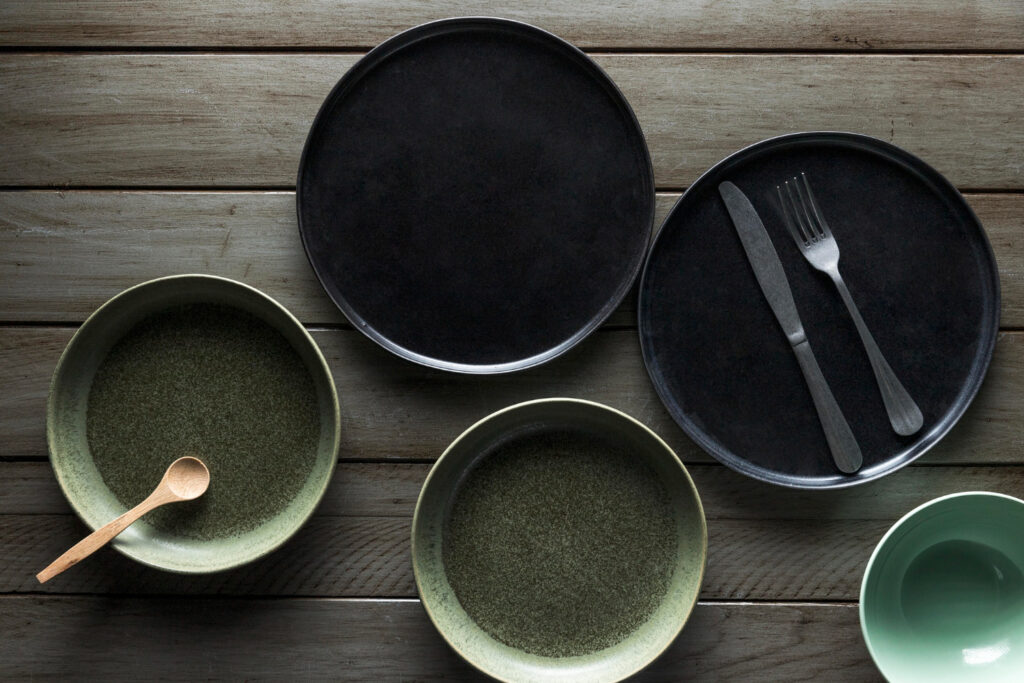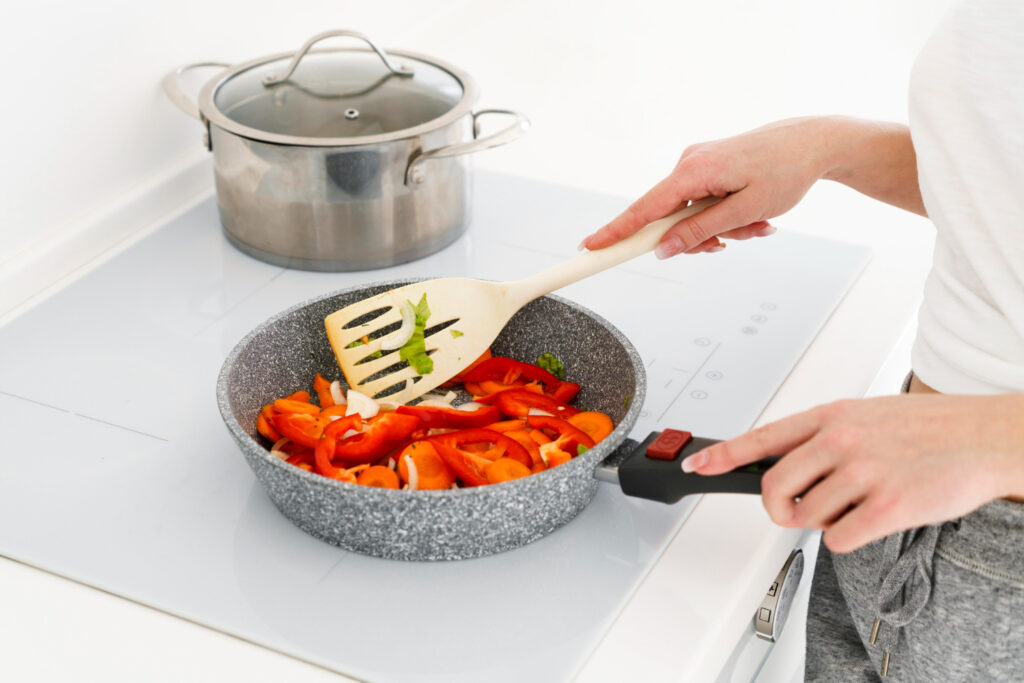Knowing how to season ceramic cookware is essential if you’ve recently invested in ceramic cookware. Keeping your ceramic cookware seasoned is a crucial step to ensuring it lasts and performs well. Ceramic cookware has the advantage of being non-toxic, non-reactive, and naturally non-stick. The key to utilizing these advantages, however, lies in a well-executed seasoning process.
This comprehensive guide will walk you through how to season ceramic cookware. We’ll show you how to choose the right cookware and master the seasoning process to success. So, let’s dive in.
Why Season Ceramic Cookware?

Ceramic cookware has rapidly become a kitchen favorite, and for good reason. There are several reasons why it’s attractive to amateurs and pros alike. In order to fully appreciate the benefits of ceramic cookware, you must understand why seasoning is so crucial.
1. Non-Stick Properties
One of the standout features of ceramic cookware is its natural non-stick surface. This property makes cooking and cleaning a breeze. However, over time, the non-stick quality can diminish. Seasoning helps maintain and even enhance this non-stick surface, preventing your food from sticking to the pan.
2. Improved Heat Distribution
Properly seasoned ceramic cookware ensures even heat distribution, preventing hot spots that can lead to uneven cooking. This results in more consistent and delicious meals, whether you’re searing a steak or sautéing vegetables.
3. Flavor Enhancement
Seasoning not only creates a non-stick surface but can also infuse your food with subtle, delightful flavors. The seasoned layer can interact with your ingredients, adding a unique touch to your dishes that unseasoned cookware can’t replicate.
Seasoning your ceramic cookware is like unlocking its hidden potential. It enhances your cooking experience and makes your dishes more delicious.
Choosing the Right Ceramic Cookware
Before you embark on the journey of seasoning your ceramic cookware, it’s essential to ensure that you’ve selected the suitable pots and pans. The quality and type of ceramic cookware you choose can significantly impact the seasoning process and, ultimately, the performance of your kitchen arsenal. Here’s what you need to consider:
1. Types of Ceramic Cookware:
- Ceramic Non-Stick Pans: These are known for their exceptional non-stick properties and are perfect for low-fat cooking.
- Ceramic-Coated Pans: These have a metal base coated with a ceramic layer, offering the benefits of ceramic while being more durable.
- Fully Ceramic Cookware: These are entirely made of ceramic and are excellent for even heat distribution.
2. Quality Matters:
- Invest in high-quality ceramic cookware from reputable brands. Well-constructed cookware will be more durable and provide consistent results.
- Check for quality certifications to ensure the cookware is free from harmful substances.
3. Compatibility with Your Cooking Style:
- Consider your cooking habits and needs. Depending on the method of cooking, some ceramic cookware may be better suited for baking, frying, or simmering.
4. Size and Shape:
- Choose cookware that fits your stovetop or oven and accommodates the type of dishes you typically prepare.
5. Maintenance and Care:
- Read and follow the manufacturer’s instructions for cleaning and maintenance. This will help extend the life of your ceramic cookware.
How to Season Ceramic Cookware: Step-by-Step
Seasoning ceramic cookware is a straightforward process that involves applying a thin layer of oil to the cookware’s surface and heating it to create a protective, non-stick layer. Follow these steps to season your ceramic cookware effectively:
Step 1: Applying a Thin Layer of Oil
- Start with a clean and dry ceramic surface.
- Choose an oil suitable for seasoning, such as vegetable oil, flaxseed oil, or grapeseed oil.
- Apply a small amount of oil to the cookware’s interior. You don’t need much; a teaspoon or two should suffice for most pots and pans.
Step 2: Spreading the Oil
- Use a lint-free cloth or paper towel to spread the oil across the entire cooking surface evenly. Ensure that you cover every nook and cranny.
- Remove any excess oil, leaving only a very thin, almost invisible layer.
Step 3: Baking or Heating the Cookware
- If you’re using an oven, place the oiled ceramic cookware upside down in the oven, with a foil-lined baking sheet or a piece of foil on the rack below to catch any drips.
- Heat the oven to the manufacturer’s recommended temperature, typically around 300°F to 350°F (150°C to 175°C). Bake the cookware for about 1 to 2 hours.
- If you prefer using the stovetop, heat the cookware over low to medium heat for about 10-15 minutes.
Step 4: Cooling and Repeating
- Allow the cookware to cool naturally. Avoid submerging it in cold water or using cold water to cool it down quickly, as this can cause thermal shock.
- Repeat the process if necessary. Some manufacturers recommend multiple seasoning cycles to achieve the best results.
By following these steps, you’ll create a seasoned layer on your ceramic cookware that enhances its non-stick properties, ensuring that your meals cook evenly and release effortlessly.
Learn More: How to Season Stainless Steel Pan
How to Maintain Seasoned Ceramic Cookware

Once you’ve successfully seasoned your ceramic cookware, it’s essential to maintain its seasoned layer to ensure optimal performance. Here are some tips for keeping your seasoned cookware in top shape:
- Clean your seasoned ceramic cookware with mild dish soap and a soft sponge or cloth.
- Avoid abrasive scrubbers or harsh cleaning agents that can damage the seasoned surface.
- Avoid overheating your pans to prevent the oil from breaking down and affecting the seasoning.
- Cooking on low to medium heat is typically sufficient for most dishes.
- When food starts to stick, or the non-stick properties decline, reapply a thin layer of oil and repeat the seasoning process.
- Ensure the cookware is completely dry before storing it to prevent rust or damage to the seasoning.
- Use wooden or silicone utensils to prevent scratching the seasoned layer.
- Place a soft cloth or paper towel between stacked or stored pans to prevent scratches.
These tips will help you maintain the seasoned layer on your ceramic cookware, ensuring it remains in top condition for cooking.
Related: How to Clean Ceramic Cookware
The Takeaway
When it comes to culinary excellence, ceramic cookware is a trusted partner. With its natural non-stick properties, even heat distribution, and flavor-enhancing qualities, ceramic cookware elevates your cooking adventures. Following the steps in this guide will help you to season your ceramic cookware effectively.





